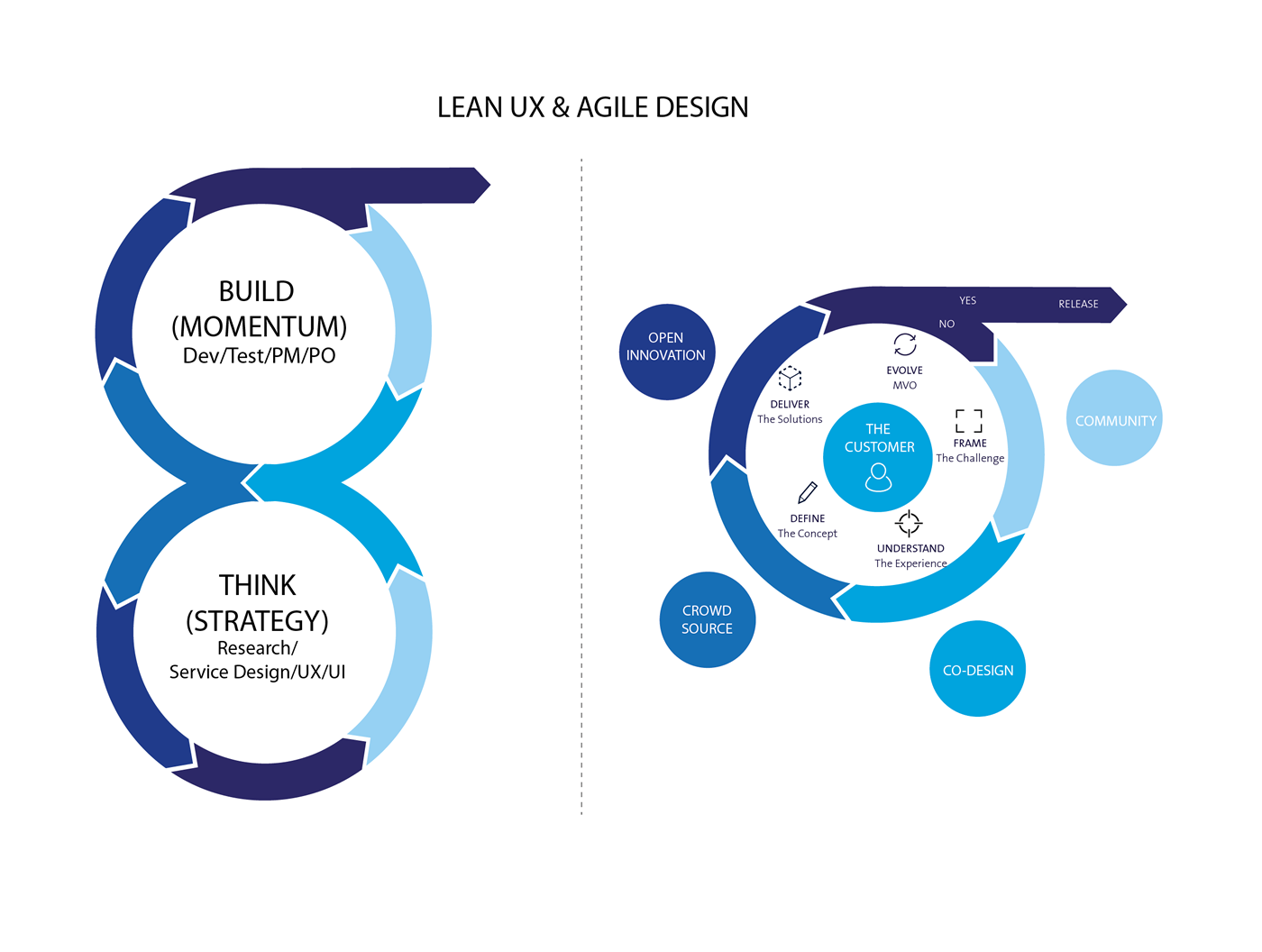As a Service Designer specialising in UX and Digital Design I have developed a number of frustrations with traditional customer-centric design methods that use a phased approached.
For the past couple of years I have been leading design teams in London, the UAE and recently in Sydney where I was involved in transformational and strategic design projects with a focus on delivering disruptive solutions for large corporations. Often I have found myself working with teams of very smart and talented people that were unable to deliver efficiently or deliver disruptive innovation.
Without a rigorous and sophisticated approach to design that incorporates HCD and DT that is lean and agile, businesses have no means of gaining and sustaining a competitive advantage by creating engaging customer experiences that are timely. Interestingly just 29% of companies surveyed by Forrester in a recent study, follow any formal design process – let alone an agile design process.
Having a customer centred design ethos is not enough. It’s about delivering meaningful experiences and innovative services that are loved by the user that are relevant, affordable, and usable. But importantly these services must be in the market place and ready to scale before incumbents or a start-up have even thought of doing what you have created.
To achieve this companies need a design model that has the customer continually engaged in ‘conversations’. The organisation has to have the means to focus design based on listening, interpreting and responding in a proactive and anticipatory way. Service and experience design methods must be strategic and practical and based on contextual and participatory work with customers who are part of an established constituency and drawn from new constituencies. Co-design with users has to be undertaken in a continually iterative fast-paced process of discovery, definition, design, development, testing and adaption.
A few years ago I found that traditional double-diamond phased design models are no longer sustainable or efficient in an agile world.
I found that the momentum of design and development had become so complex and fast paced that the traditional skills and labour intensive processes that produced graphic assets were no longer relevant or sustainable. These beautiful but overly complex assets; experience maps, storyboards, wireframes and WOW diagrams, were no longer perceived as having a cache or currency because they were not delivering real value. They have, by enlarge, become irrelevant.
For companies to compete with agile innovation they will increasingly have to adopt a lean UX design model that works with constituencies. This will enable companies to strategically integrate design into their businesses, as well as their culture, behaviours, activities, and values.
A lean UX design process is based around agile methodologies and incorporates insight driven strategic design in an iterative design and innovation solution model that is called WAgile.
WAgile takes the best and most effective features of a phased Waterfall approach (based on a double diamond model) and Agile (based on work-streams and sprints) and features HCD at is core to drive insight based innovation that engages with customer’s and users in a co-design process.
To find out more about Lean UX, its methods and tools please email me.
